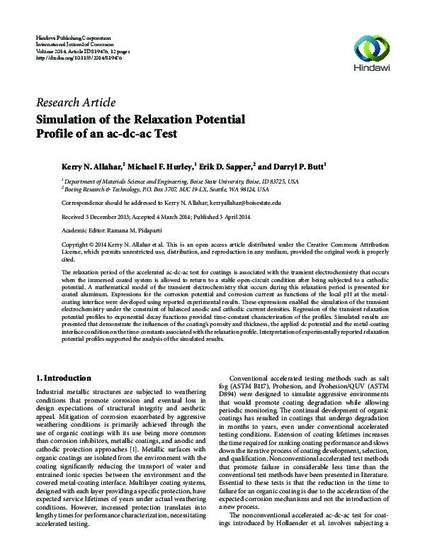
The relaxation period of the accelerated ac-dc-ac test for coatings is associated with the transient electrochemistry that occurs when the immersed coated system is allowed to return to a stable open-circuit condition after being subjected to a cathodic potential. A mathematical model of the transient electrochemistry that occurs during this relaxation period is presented for coated aluminum. Expressions for the corrosion potential and corrosion current as functions of the local pH at the metal-coating interface were developed using reported experimental results. These expressions enabled the simulation of the transient electrochemistry under the constraint of balanced anodic and cathodic current densities. Regression of the transient relaxation potential profiles to exponential decay functions provided time-constant characterization of the profiles. Simulated results are presented that demonstrate the influences of the coating's porosity and thickness, the applied dc potential and the metal-coating interface condition on the time-constants associated with the relaxation profile. Interpretation of experimentally reported relaxation potential profiles supported the analysis of the simulated results.
This document was originally published by Hindawi Publishing Corporation in International Journal of Corrosion. This work is provided under a Creative Commons Attribution License. Details regarding the use of this work can be found at: http://creativecommons.org/licenses/by/3.0/. doi: 10.1155/2014/819476
Available at: http://works.bepress.com/michael_hurley/6/
